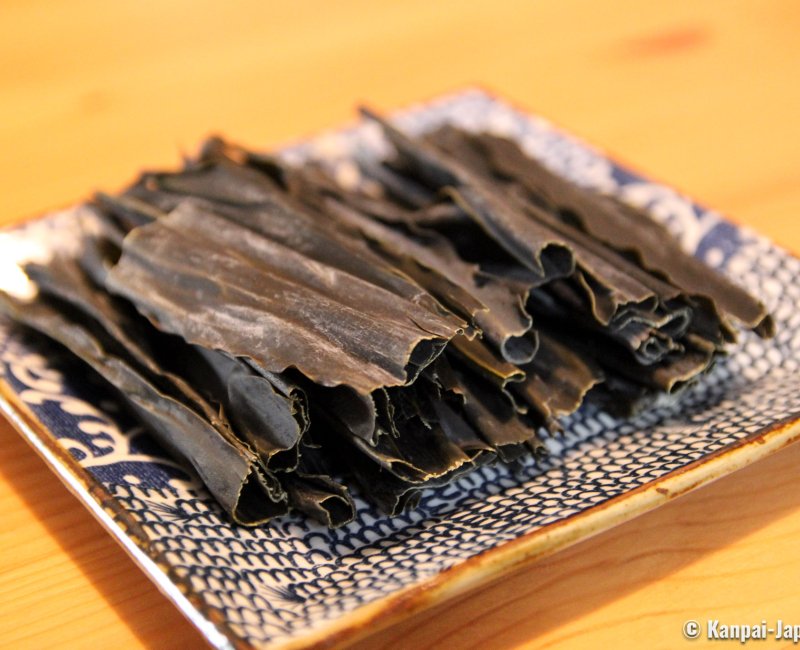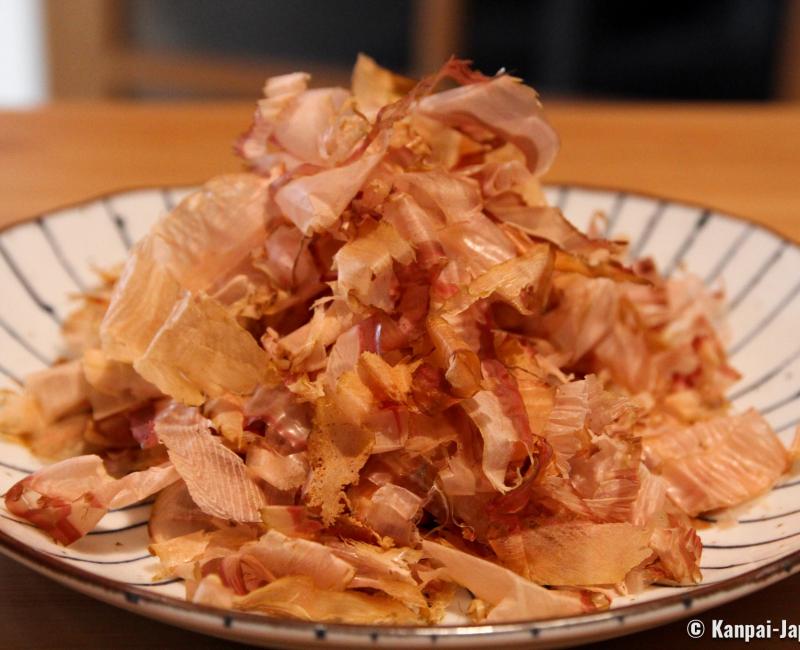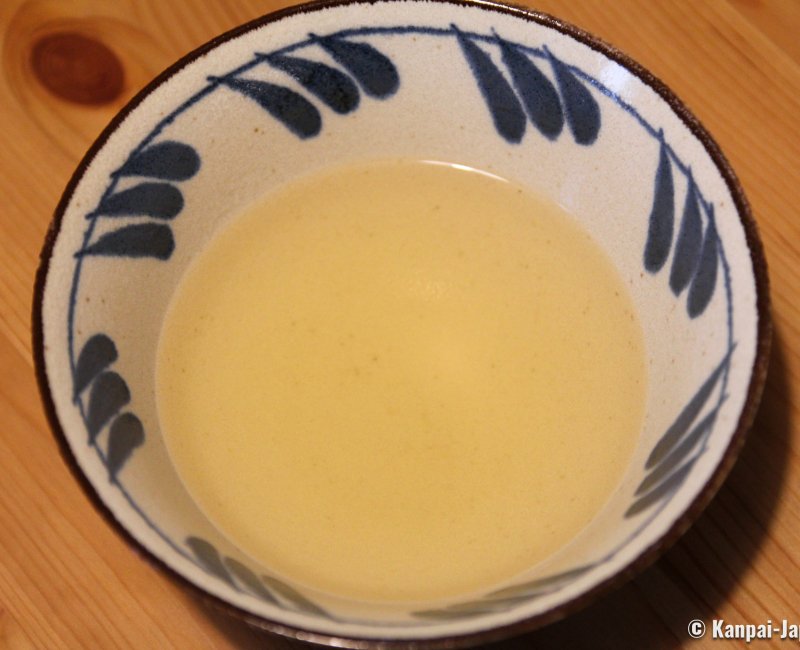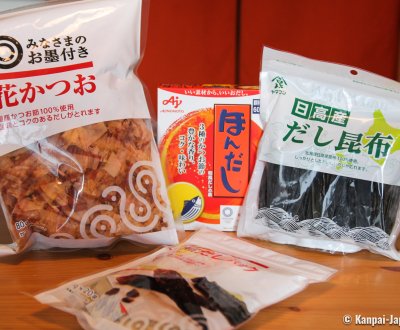Dashi
The Savory Broth of Japanese Cuisine
Dashi is a type of broth and a staple of Japanese cuisine. A clear colored stock, it is made from algae, mushrooms or dried fish, and is at the base of many Japanese dishes. Various dashi recipes exist but all are aiming at enhancing the famously appetizing umami flavor.
As a staple of Japanese cuisine, the dashi (出汁) broth is the base stock used in many every day dishes such as ramen 🍜 noodles, oden hotpot, okonomiyaki cabbage pancakes or takoyaki octopus balls.
Variations with 4 main ingredients
The preparation of dashi uses only 4 main ingredients, and not fat is added:
- Kombu or konbu (昆布) algae;
- Katsuobushi (鰹節) bonito flakes;
- Shiitake (椎茸) mushrooms; and,
- Niboshi (煮干し) small dried sardines.
Then, depending on the combination and proportions of these ingredients, the dashi vary in several recipe types, whose most common are:
- 昆布出汁 kombu dashi, a broth only made with konbu algae and mostly used to cook vegetables;
- 鰹節出汁 katsuo dashi, made only with katsuobushi bonito flakes and used in soups;
- しいたけ出汁 shiitake dashi, with only shiitake mushrooms and perfectly paired with cold fine somen noodles that are eaten in summer or to prepare miso soup;
- 煮干し出汁 niboshi dashi, made with only niboshi dried sardines, it gives a strong and bitter flavor;
- 精進出汁 shojin dashi, is a recipe combining konbu algae and shiitake mushrooms which is perfectly suitable for vegetarian or vegan cooking;
- 合わせ出汁 awase dashi, names the classical and popular association of kombu and katsuobushi.
Japanese chefs usually have their own dashi recipe that made their reputation, and whose detailed ingredients are obviously secret.

Preparation of a classical broth
The most commonly used dashi recipe in Japan includes the following ingredients:
- 10g of kombu algae;
- 40g of katsuobushi bonito; and,
- Spring water.
Start by soaking the konbu in cold water (about 1,5l) for at least 3 hours, ideally a whole night in the fridge. The konbu piece can be used as such or finely sliced so as to release more iodized flavors.
Then, cook the water and algae on a low heat and make sure to take out the konbu before the water boils, in order to avoid too much bitterness in the broth. Stop the heat, add the bonito flakes and let them brew in the kombu water. After a while, use a strainer to filter the bits from the liquid, and the dashi is ready.
In Japan, there is:
- 一番出汁 ichiban dashi the first broth, whose taste is fine and delicate; and,
- 二番出汁 niban dashi, which means second broth and is the first broth reheated, with stronger flavors.
Dashi to support the umami
The historical origins of the Japanese broth are unclear. In the West, broths and stocks were usually prepared using meat, but eating meat was partly forbidden in the archipelago. As a matter of fact, an imperial decree of 675 banned the consumption of beef, chicken, horse, dog and monkey 🐒 meat, mainly due to the influence of Buddhism introduced to the country in the early 6th century. The ban was officially lifted in the 19th century only.
To flavor their dishes, the Japanese looked for other food with natural aroma, among vegetables and fish. According to historical sources, the use of konbu algae and bonito flakes date back to the 15th century, and maybe even earlier, to the 8th century. In any case, dashi as it is currently known has been widely used in the Japanese diet since the early Edo period (1603 - 1868).
Thus, the Japanese have been enjoying dashi for a long time, as it enhances the "good taste" called umami in Japanese, the famous 5th flavor officially discovered by professor Kikunae Ikeda in 1908 and that they love. To the basic sweet, savory, acid and bitter flavors is added the umami, an appetizing flavor that seem to "burst into the mouth". Technically speaking, the umami is created by specific amino acids found in food and that are natural taste enhancers, such as:
- Glutamine acid (or glutamate) that is found in konbu algae but also in mushrooms, tomatoes and corn; and,
- Inosinic acid, especially in the katsuobushi.

Where to buy the ingredients for dashi broth?
The 4 main ingredients can easily be bought in Japan at the supermarket (such as Seiyu, Life, Aeon), in shotengai shopping streets of in food markets such as Ameyokocho in Ueno or Tsukiji Outer Market in Tokyo where you’ll find many shops specialized in bonito, mushrooms as well as edible algae. The origin of each ingredient can have an impact on its quality: Hokkaido island is renowned for its konbu, while Shima peninsula and Kagoshima prefecture are known for the quality of their katsuobushi.
Konbu and shiitake are dried and vacuum packed and therefore easily exportable outside the archipelago, and often sold on the internet 📶 by Asian-based online shops. They are consequently quite easy to purchase from Western countries. The true Japanese katsuobushi, however, is banned from exportation, and one must check in one’s area for a local production.
Lastly, as any staple products, dashi also exist in ready-made industrial versions, such as:
- ほんだし hondashi (by Ajinomoto), dried powder to mix with water to get the broth;
- 天然だしパック tennen dashi pakku, the dashi ingredients are packaged in brewing bags to let infuse in water; or,
- A liquid, either a soup or a concentrate, to use as such.
For all these products, we recommend thoroughly checking their composition as other ingredients can be added to the broth base, such as salt, sugar or shoyu soy sauce.


